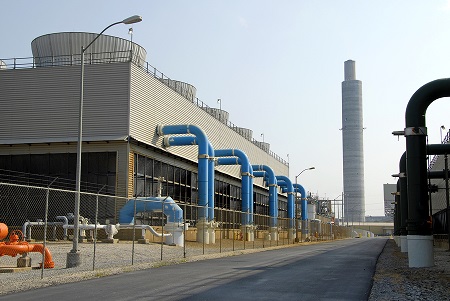Smokestack Scrubbers – What You Need to Know
 Smokestack scrubbers are a relatively new component to industrial exhaust systems. Scrubber systems are used as air pollution control devices that remove harmful particles, gases, or chemical byproducts from industrial exhaust streams. While not found on many older industrial chimneys, new government regulations are requiring them to be added or constructed as an emissions control device. Although the EPA focuses most of its regulations & emission requirements on power plants and the energy industry, any plant that has a high-emission fuel source, such as natural gas, coal, or trash, will need to have some version of a scrubber or scrubber system installed.
Smokestack scrubbers are a relatively new component to industrial exhaust systems. Scrubber systems are used as air pollution control devices that remove harmful particles, gases, or chemical byproducts from industrial exhaust streams. While not found on many older industrial chimneys, new government regulations are requiring them to be added or constructed as an emissions control device. Although the EPA focuses most of its regulations & emission requirements on power plants and the energy industry, any plant that has a high-emission fuel source, such as natural gas, coal, or trash, will need to have some version of a scrubber or scrubber system installed.
These emissions control devices use liquid or chemicals to remove particulate matter or gases from industrial exhaust and flue gases. Atomized liquid (generally water) catches and entrains pollutant gases and harmful particles, turning them into slurry waste streams which will then need to be recycled or disposed of. While there are many air pollution control components on the market, smokestack scrubbers are very multidisciplinary. These units have the ability to remove gases, mists, and solids simultaneously. Plus, they can act as a cooling mechanism for the exhaust stream. Air scrubbers, also called wet scrubbers or gas scrubbers, are also capable of handling flammable and explosive gases safely.
Operation
As the exhaust air leaves the plant’s furnace or manufacturing equipment, it passes through the duct network where it makes its way to the scrubber system. The smokestack scrubber collects potential harmful materials from the exhaust stream, then releases the clean air out through the smokestack. Some scrubber systems also contain a heat recovery coil that collects the heat energy from the exhaust and transfers it back into the building’s heating unit for reuse, which saves energy and money.
Two Types of Industrial Scrubber Systems: Wet & Dry
“Wet” scrubber systems use water or some type of liquid to collect harmful substances from the exhaust air. Wet smokestack scrubbers work with both gaseous and solid material, and can even safely handle corrosive materials. “Dry” scrubber systems, on the other hand, use specific chemicals that target, absorb, and dissolve hazardous materials in the exhaust. Dry smokestack scrubbers are more suitable for gaseous materials than solid waste particles.
Maintenance
As with other components of an industrial chimney or smokestack exhaust system, scrubbers must be properly maintained and cleaned. Filters and material collection devices should be emptied or replaced as necessary. A smokestack scrubber that is not properly maintained will be inefficient and can become a breeding ground for bacteria. Scrubbers can also suffer from high levels of corrosion and produce slurry waste streams which tend to be more of a hassle to recycle and dispose of.
Industrial Access regularly maintains and inspects industrial chimneys and smokestack systems. Our industrial professionals can review the condition of your chimney or stack connected to your scrubbing system and offer advice on maintenance that may be needed. Since smokestack scrubbers are a newer type of technology, we do recommend reaching out to your manufacturer for any required cleanings and repairs, because generally they fall under warranty. Speak with our experts today to find out more about plant and industrial chimney maintenance and how we can assist with maintenance plans for your industrial exhaust system.



